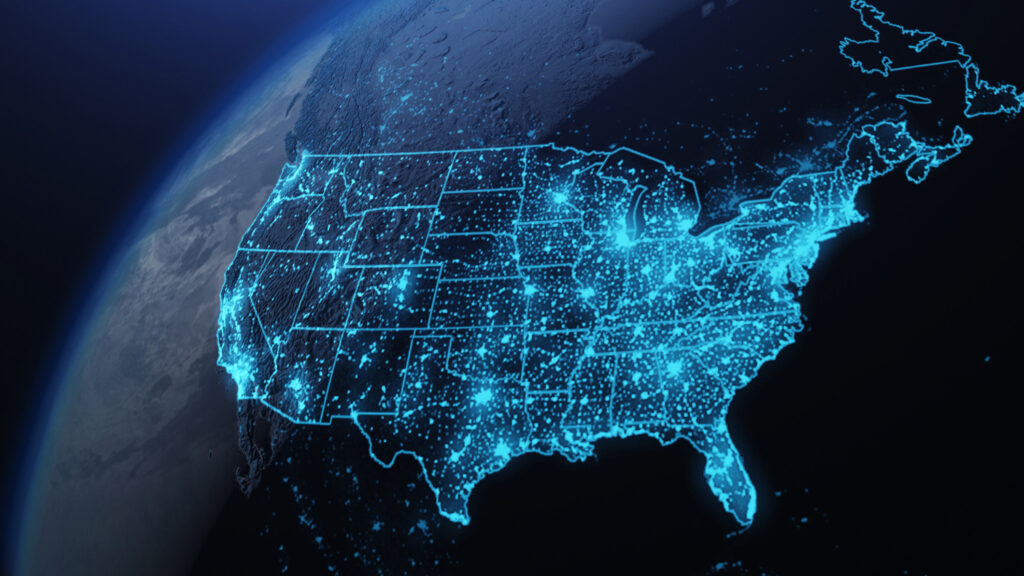U.S. government funding programs for small businesses and startups play a critical role in supporting innovation, growth, and resilience. Entrepreneurs across the country often search for free grants to start a business or other government incentives to fuel their growth. The good news is that The U.S. federal government provides a variety of incentive programs to encourage small and medium-sized enterprises (SMEs) to pursue innovative projects, promote research and development (R&D), and stimulate economic growth. These programs cover a wide range of areas from women entrepreneurs and the manufacturing sector to public-private partnerships and clean energy. In this article, we’ll explore five prominent federal incentive programs and how they serve as government incentives for entrepreneurs nationwide.
Top U.S. Government Funding Programs for Small Businesses and Startups
Small businesses and startups have access to five major U.S. government funding programs that can help fuel their growth. Each program provides different forms of support — from research grants and low-interest loans to tax credits and disaster relief — so it’s important for entrepreneurs to understand the options. In this article, we’ll explore five prominent federal incentive programs and how they serve as government incentives for entrepreneurs nationwide, starting with the Small Business Innovation Research (SBIR) program.
SBIR Program (Small Business Innovation Research)
Among the most impactful U.S. government funding programs for small businesses and startups, the SBIR program stands out as a flagship initiative that fuels innovation through non-dilutive capital. The SBIR Program is an R&D support initiative that encourages small businesses to develop innovative solutions by leveraging their scientific and technological potential. SBIR grants are often called America’s largest source of non-dilutive capital for early-stage startups – meaning you receive funding that doesn’t require giving up equity or taking on debt. The program focuses especially on fields such as cybersecurity, border security, disaster management, and biological threat prevention.

How SBIR Works: With a phased funding structure, it offers initial funding for project feasibility, followed by more substantial support for prototype development and testing, and finally encourages private investment for commercialization, as shown below.
- Phase I funding (typically a smaller grant) tests the feasibility of an idea or technology.
- Phase II funding (a larger grant) supports further development, prototyping, and testing of the most promising Phase I projects.
- Phase III is the commercialization stage, where no direct grant is given but companies are expected to pursue market entry (often by attracting private investment or securing government contracts based on the earlier research).
The SBIR aims to ensure that innovative technologies do not remain at the academic level but evolve into practical solutions that meet societal needs. In other words, through this phased approach, SBIR ensures high-potential innovations can move from the lab to the marketplace. For example, many modern tech and biotech companies got their start with SBIR federal innovation support, turning early research into commercial products.
How to apply for SBIR: Each year, 11 federal agencies (like NIH, DoD, NSF, DOE, etc.) issue solicitations listing research topics they want to fund. If you’re wondering how to apply for an SBIR grant, the process involves identifying a relevant agency’s solicitation (via the official SBIR.gov portal) and submitting a proposal outlining your project’s objectives, scientific merit, and commercialization plan. The application process is competitive, but winning an SBIR award can inject significant funding and credibility into your startup’s journey.
STTR Program (Small Business Technology Transfer)
The STTR program is a sister program to SBIR that also provides federal R&D grants to small businesses, with one key twist: it requires a collaboration with a nonprofit research institution. In other words, STTR grants fund innovative projects where a small business works in partnership with a university, federal lab, or other research institution to develop a technology. The goal is the commercialization of publicly funded scientific research through its transfer to the private sector, namely, by facilitating the movement of research discoveries (technology transfer) from academia to the commercial marketplace.
How STTR works: Much like SBIR, STTR is structured in phases. The program consists of three main phases: initial feasibility studies, followed by technology development, and finally commercialization efforts to bring products to market. However, because of the partnership requirement, a portion of the R&D work is carried out by the research institution partner. STTR offers businesses without research infrastructure the opportunity to access the knowledge and technologies of universities. This program is especially useful for small companies that have a great idea but lack in-house lab facilities or deep research capacity – by partnering with, say, a university research lab, the business can leverage academic expertise and resources. Ultimately, STTR helps bridge the gap between academic innovation and real-world product development, ensuring publicly funded research doesn’t just sit on a shelf but gets a chance to turn into a product or service in the market.

SBIR vs. STTR: Key Differences
While SBIR and STTR are similar in providing federal innovation support for R&D, there are a few important differences to keep in mind when deciding which program fits your business:
- Research Partnerships: Under SBIR, partnering with a university or research institute is allowed but not required. Under STTR, such a partnership is mandatory – you must team up with an accredited research institution to be eligible.
- Division of Work: In an SBIR project, the small business must perform the bulk of the work (for example, at least two-thirds of the R&D in Phase I is typically done by the company itself, with up to one-third outsourced). In an STTR project, the work can be more distributed: the small business must do at least 40% of the work, and the partnered research institution must do at least 30%. The remaining work can be collaboratively decided or subcontracted.
- Principal Investigator (PI) Employment: SBIR requires that the project’s primary researcher (PI) be principally employed by the small business during the project. STTR is more flexible – the PI can be employed by either the small business or the research partner organization.
- Participating Agencies: The SBIR program is larger in scope, mandated at 11 federal agencies. STTR is offered by five agencies (a subset of those that participate in SBIR) that have significant extramural R&D budgets. This means there are more SBIR solicitations annually than STTR, but STTR focuses on areas with strong research institution involvement.
In summary, SBIR vs. STTR comes down to whether you plan to partner with a research institution. If your innovation can be developed in-house and you want maximum control, SBIR is likely the route to pursue. If your concept was born in a university lab or would benefit from academic R&D collaboration, STTR provides a pathway to team up and jointly pursue federal funding. Many small businesses actually pursue both programs over time, depending on the nature of their projects.
WOSB Federal Contract Program (Women-Owned Small Business)
Not all federal support comes in the form of grants – some come as opportunities. The Women-Owned Small Business (WOSB) Federal Contract Program is a key incentive program to help women entrepreneurs gain access to federal government contracts. The federal government sets a goal of awarding at least 5% of all federal contracting dollars each year to WOSB-certified companies. To achieve this, certain contracts are set aside exclusively for competition among women-owned businesses, especially in industries where women-owned firms have historically been underrepresented.
Qualifications: To participate in the WOSB program, your business must meet specific WOSB certification criteria established by the Small Business Administration (SBA):
- 51% Women Ownership: The company must be at least 51% owned and controlled by one or more women who are U.S. citizens.
- Women in Control: Oaily operations and long-term strategic decisions must be managed by women. (In other words, ownership on paper isn’t enough – women must actively run the company.)
- Small Business Size: The business must also meet the size standards set by the U.S. Small Business Administration (SBA) for its specific industry The SBA size standards are usually based on number of employees or average annual receipts, varying by NAICS industry code.
For women entrepreneurs with limited financial resources, the program includes a special subset ccalled EDWOSB (Economically Disadvantaged Women-Owned Small Business). EDWOSB-certified firms can access an even narrower set of contracts reserved for the most disadvantaged women-owned businesses.
How the WOSB program helps: By competing for WOSB set-aside contracts, women entrepreneurs have a more level playing field in industries where they might otherwise struggle against larger or more established competitors. Winning a federal contract can provide a stable revenue stream and validate your business’s capabilities, which in turn can fuel growth (much like a grant or outside investment might).
WOSB Certification: Process and Benefits
To benefit from the WOSB Federal Contract Program, a company must go through the WOSB certification process. Certification can be obtained in one of two ways:
- Through the SBA: The SBA offers a free online certification process at the certify.sba.gov portal. You’ll need to create an account, provide your business’s Unique Entity ID (from SAM.gov registration) and upload documentation proving your eligibility (such as corporate documents, proof of ownership and control, financial statements, etc.). The SBA will review and, if everything is in order, certify your business as WOSB (and EDWOSB if applicable).
- Through an Approved Third-Party Certifier: SBA also approves certain third-party organizations (like WBENC or others) that can certify your business as a WOSB. If you already have a certification through one of these, you can upload proof to the SBA’s portal to receive official recognition. (Note: as of recent updates, all firms must still register on SBA’s portal even if using a third-party certification.)
Benefits of WOSB certification: Once certified, your business becomes eligible to bid on WOSB-only contract opportunities. The advantages include:
- Exclusive access to contracts: Federal agencies designate contracts in specific industries for WOSB/EDWOSB competition. Only certified firms can bid, greatly reducing the competition. Some contracts may even be awarded on a sole-source basis (without competition) to a WOSB if certain conditions are met, up to a dollar threshold – a huge potential advantage for a qualifying firm.
- Competitive edge: Being a certified WOSB can differentiate your company when partnering with larger contractors or pursuing subcontracts, as primes may seek out WOSBs to fulfill their own subcontracting goals.
- Growth opportunities: Breaking into the federal marketplace can be challenging; the WOSB program essentially opens a door for women-owned businesses. A contract win can lead to more experience, past performance credentials, and future opportunities that help your business grow.
Overall, the WOSB Federal Contracting Program is not a direct grant or loan, but it’s a powerful federal incentive aimed at empowering women entrepreneurs. It harnesses the government’s buying power to fuel small business growth in a way that can be just as impactful as a cash grant for the right business.
Manufacturing Extension Partnership (MEP) Program
For those in the manufacturing sector, the Manufacturing Extension Partnership (MEP) is the go-to federal manufacturing assistance program. Administered by the National Institute of Standards and Technology (NIST) under the Department of Commerce, MEP is a national network of centers dedicated to helping small and mid-sized manufacturers compete and grow. There are MEP centers in all 50 states and Puerto Rico, meaning no matter where your business is located, you can access their services.

What services do MEP centers offer?: MEP centers provide personalized consulting and training services to manufacturers to improve their operations and drive growth. Key areas of support include:
- Process Improvement & Efficiency: Experts help manufacturers implement lean manufacturing principles, optimize workflows, reduce waste, and improve quality control. This leads to higher productivity and cost savings.
- Technology Adoption: MEP advisors guide businesses in adopting new technologies – for example, transitioning to digital manufacturing, automation and robotics, or improving cybersecurity for factory systems. If you’re looking to modernize your production, MEP can assist with that digital transformation.
- Sustainable Manufacturing: Centers advise on how to incorporate sustainable practices, such as energy efficiency improvements, waste reduction, or integrating clean energy solutions into your operations – saving money while meeting environmental goals.
- Workforce Development: Many manufacturers struggle with skilled labor shortages. MEP programs can help train your workforce in critical skills, implement apprenticeship or upskilling programs, and improve workforce retention through better HR practices.
- Business Expansion & Innovation: MEP can also connect manufacturers with resources for developing new products, accessing new markets (including export assistance), and improving supply chain management. They often host workshops or offer one-on-one mentoring on business strategy for manufacturers looking to expand.
One of the strengths of MEP is that it’s a public-private partnership – funding comes from federal, state, and private sources, allowing MEP services to be delivered at affordable rates to small businesses. In some cases, MEP centers have access to grants or project-based funding (often through Notices of Funding Opportunities (NOFOs) or special initiatives) that manufacturers can tap into for specific projects like technology pilot programs or energy efficiency upgrades.
Impact: Engaging with an MEP center can yield significant benefits. According to NIST’s reports, MEP assistance has helped thousands of U.S. manufacturers generate billions in new sales and cost savings, and create or retain many jobs. For a small manufacturing firm, having expert consultants come in (at little or no cost if subsidized by MEP) to streamline your production or implement a new technology can be transformative. It’s an often-overlooked form of federal support for small business that goes beyond writing a check – it’s hands-on help to make your business better and more competitive in the long run.
Department of Energy (DOE) Grants for Clean Energy Startups
If your startup is in the energy, environmental, or clean tech space, the Department of Energy has DOE funding for startups through various programs aimed at innovation in sustainable technologies. Two of the most notable DOE initiatives are housed in the Office of Energy Efficiency and Renewable Energy (EERE) and the Advanced Research Projects Agency–Energy (ARPA-E).

EERE Grants: The Office of Energy Efficiency and Renewable Energy (EERE) runs competitive grant programs (often announced as Funding Opportunity Announcements, or FOAs) to support projects that advance clean energy and energy efficiency innovations. These could be in areas such as: renewable power generation (solar, wind, geothermal, hydroelectric), energy storage systems (like cutting-edge batteries to support the electric grid or electric vehicles), energy-efficient manufacturing processes, advanced biofuels, smart grid technology, building energy efficiency, and more. The goal is to accelerate the transition to sustainable energy and lower the costs of emerging technologies. Small businesses, often in partnership with universities or industry, can receive significant funding to develop and demonstrate their innovations. Each EERE grant solicitation will outline specific technical topic areas of interest, and applications are judged on technical merit, innovation, and potential impact on U.S. energy goals. These clean energy grants not only provide capital but also align your project with national priorities, potentially opening doors to partnerships with research institutions and industry leaders. This makes DOE support a cornerstone of U.S. government funding programs for small businesses and startups in the energy sector.
ARPA-E Funding: Modeled after the famous DARPA in the defense realm, ARPA-E is DOE’s high-risk, high-reward research funding arm. ARPA-E issues periodic open funding solicitations as well as focused programs targeting specific energy challenges. The agency looks for transformational energy technologies – the kind of big leaps that could change the game in energy generation, storage, or usage. For example, ARPA-E projects have included things like novel grid-scale battery chemistries, ultra-efficient building cooling systems, carbon capture innovations, and even futuristic fusion energy concepts. Importantly for startups, ARPA-E funding is another form of non-dilutive capital that can propel early-stage ideas. It often supports projects that are too early or too risky for traditional venture capital to back. If your startup has a moonshot idea in clean tech, ARPA-E can be a fantastic opportunity to get funding and technical guidance to develop it. ARPA-E funded teams also gain prestige and validation – being an ARPA-E awardee signals that your technology has strong potential, which can help attract follow-on investors or commercial partners.
Other DOE Opportunities: In addition to EERE and ARPA-E, keep in mind that the Department of Energy participates in SBIR/STTR as well. In fact, DOE’s SBIR/STTR programs are significant funding sources for energy-focused startups (covering topics in renewable energy, nuclear energy, fossil energy, and beyond). So, entrepreneurs in the energy sector have multiple avenues to explore within DOE.
By tapping into DOE grants and funding programs, startups working on climate and energy innovations can accelerate their R&D without sacrificing ownership. These government incentives for entrepreneurs in energy not only provide funding but also align your project with national priorities, potentially opening doors to partnerships with research institutions and industry leaders. The competition is stiff, as energy breakthroughs can have massive impact, but the payoff – both in funding and in moving humanity toward a cleaner future – can be well worth the effort.
Conclusion: Leverage Federal Incentives to Fuel Your Business Growth
As we’ve seen, there’s a wealth of U.S. federal programs – from SBA grants for R&D to specialized contracting and assistance programs – that offer tangible support to small businesses and startups. Whether you’re developing a new technology, aiming to break into government contracting, or seeking expert guidance to improve your operations, these programs provide pathways to growth that might otherwise be out of reach. The best part is that they often come in the form of grants or free services, truly fitting the description of free grants to start a business or grow one (with the understanding that “free” comes with the need to meet requirements and deliver on project goals).
That said, navigating the application processes and compliance rules for federal programs like SBIR, STTR, WOSB, MEP, or DOE grants can be complex. Each program has its own eligibility criteria, timelines, and proposal requirements. Success often depends on careful preparation, understanding the nuances of each program, and sometimes, the ability to align your business strategy with what these initiatives are looking to fund or support.
Our advice to entrepreneurs: Do your homework on which program best fits your needs, start early with applications (deadlines can be infrequent or annual), and don’t get discouraged by competition – many companies apply multiple times before winning an award. The payoff of securing a federal grant or contract can be transformative, providing not just money but also credibility, mentorship, and connections in your industry.
If you need guidance in exploring or applying to any of these federal small business support programs, our team at OGP Law Firm is here to help. We specialize in assisting small businesses and startups in understanding the legal and procedural landscape of government incentives. From reviewing grant proposal documents, ensuring compliance with federal regulations, to advising on certifications like WOSB, we can provide professional, clear, and engaging support every step of the way. Contact us for further guidance on leveraging federal small business programs to accelerate your entrepreneurial success. With the right strategy and support, you can leverage U.S. government funding programs for small businesses and startups to fuel your long-term success and take your business to new heights.



